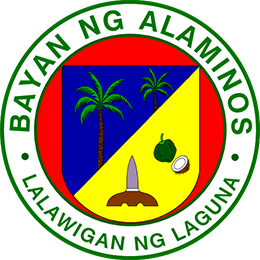
A stretch of road slicing a verdant plateau where Mount Makiling meets Mount Banahaw would give a traveler a unique experience of the two mystic mountains feral charm. And yet, where the paved highway uncovers an inhabited hinterland lies the town of Alaminos–an upland municipality that gives a bonus of the merging mountains exceptional surprises.
The moment Alaminos gentle winds blow, an interesting leisure up ahead is certain. A stroll about town is a satisfying bit of one’s visit as it imparts the town’s quiescence and inbuilt wonders. A typical agricultural town of cordial people through the ages, Alaminos has gradually renovated itself by picking up with the changes brought about by the modern times. A number of ancestral houses that humbly mingle with modest homes, some commercial stores and other business establishments in the midst of lush vegetation shape the present environs of this burgeoning community.
Formerly a barrio of San Pablo called Trinchera (Spanish for ditch) because of the presence of deep ditches around, Alaminos was then the place where fugitives hid from the Spanish authority. Through the efforts of Capitan General Juan De Alaminos Rivera, it separated from San Pablo in 1873 and became a town of Batangas. It was renamed Alaminos as a tribute to the Captain General. In 1903, the jurisdiction of the town was transferred to the province of Laguna.
The hilly terrains of Alaminos teem with almost unspoiled vegetation. Rare century-old hardwood trees can still be found around, and tropical fruit trees abound in relative abundance.
Here, catching sight of freshly picked fruits and other crops displayed in stalls along Maharlika Highway is a common scenario luring many a traveler to stop by. No wonder why Alaminos is the home of the famous Kayumanggi bottle preserves–a trademark that has made the famous halo-halo one easy-to-prepare Filipino dessert. But, aside from bottled preserves for which the town has long been noted for, Alaminos is also fast becoming proverbial name in the world of agri-business with the emergence of the 16-hectare Alaminos Goat Farm along the Maharlika Highway. Since 2004, the farm produces the choicest breeds of goats and fresh goat’s meat, bottled milk and white cheese.
When harvesting season in October is at its peak, Alaminos comes in full swing. It is the time of the year when folks from all 15 barangays gather round for the Coramblan ( contraction of coconut, Rambutan and Lanzones) Festival–a tribute to three fruit trees that primarily occupy most of the town’s agricultural expanse. The nine-day festivity is also a sort of thanksgiving to its patron saint, Nuestra Señora del Pilar, for the bountiful annual harvest.
As the streets of Alaminos display the colors of Coramblan, in the midst of the reveling townspeople, another spell is cast.




